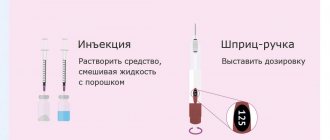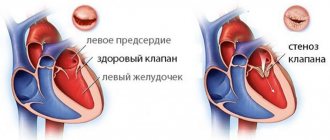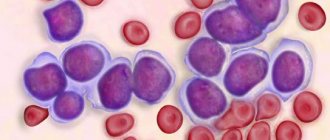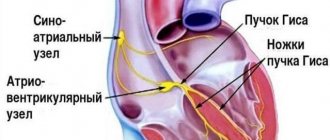Acute lymphoblastic leukemia is a malignant pathology of the bone marrow and blood, which consists of the production of blast (immature) leukocytes by the hematopoietic organ. These cells are unable to perform their function and gradually displace normal cells, which leads to a catastrophic decline in immunity, anemia, infectious inflammatory processes, bleeding and other disturbances in the normal functioning of the body. The disease develops very quickly and, in the absence of qualified medical care, leads to death within several months.
Kinds
The generally accepted classification of acute lymphoblastic leukemia (ALL) divides them into two groups, depending on the type of leukocytes affected.
- B-cell (up to 85% of all cases) is most typical for childhood, with the peak incidence occurring in the 3rd year of life. Adults rarely get sick. The second risk group is people over 60 years of age, but among older people the incidence is 5-6 times lower than in children
- T-cell (15-20% of cases) is characterized by a more severe course and high aggressiveness. The largest number of cases occurs among 15-year-olds.
Pathological mutation of B-leukocytes and T-leukocytes can occur at different stages of maturation. If immature cells appear in the blood, mutated in the initial stages, then the prefix “pre” is added to the name of the form of leukemia. This distinguishes lymphocytic oncopathologies from acute non-lymphoblastic leukemia, in which there is no such division.
charitable foundation
The essence of the disease
Leukemia, or leukemia, is a disease of the hematopoietic system, sometimes colloquially called “blood cancer.” In leukemia, the bone marrow produces an excess amount of abnormal, immature blood cells, usually the precursors of white blood cells. These blast cells, multiplying and accumulating in the bone marrow, interfere with the production and functioning of normal blood cells, which causes the main symptoms of the disease. In addition, these tumor cells can accumulate in the lymph nodes, liver, spleen, central nervous system and other organs, also causing specific symptoms.
As you know, different blood cells develop differently and have different precursors - that is, they belong to different lines of hematopoiesis (see diagram in the article “Hematopoiesis”). The line of hematopoiesis leading to the appearance of lymphocytes is called lymphoid; the remaining leukocytes belong to the myeloid lineage. Accordingly, leukemias are distinguished from the precursor cells of lymphocytes (such leukemias are called lymphoblastic, lymphocytic, or simply lymphocytic leukemias) and from the precursors of other leukocytes (myeloblastic, myeloid, myeloid leukemias).
Acute lymphoblastic leukemia (ALL) is the most common type of leukemia in children, but the disease also occurs in adults. The term "acute" refers to the rapid progression of the disease, as opposed to chronic leukemia. The term “lymphoblastic” means that the immature cells that form the basis of the disease are lymphoblasts, that is, the precursors of lymphocytes.
Incidence and risk factors
ALL accounts for 75-80% of all tumor diseases of the hematopoietic system in children and approximately 25% of all childhood cancers in general (approximately 4 cases per 100 thousand children per year). ALL is the most common cancer in children. Most often, ALL occurs before the age of 14 years; Peak incidence in children occurs between 2 and 5 years of age. This disease occurs slightly more often in boys than in girls.
The likelihood of developing ALL is slightly increased in people who have previously been treated for another disease (usually cancer) using radiation or certain types of cytotoxic chemotherapy. The risk of ALL is also increased in children with certain genetic disorders, such as Down syndrome, neurofibromatosis type I, or a number of primary immunodeficiency conditions.
A child has a higher than average risk of getting the disease if his or her twin brother or sister has already been diagnosed with leukemia. Other cases where ALL occurs in more than one child in the same family do occur, but are extremely rare.
However, in most cases of ALL, no known risk factor can be found, and the causes of the disease remain unknown.
Signs and symptoms
ALL is characterized by many different symptoms and can manifest itself in completely different ways in different patients. Most of the observed symptoms, however, are due to severe hematopoietic disorders: an excess of abnormal blast cells in ALL is combined with an insufficient number of normal functional blood cells.
Weakness, pallor, loss of appetite, weight loss, rapid heartbeat (tachycardia) are usually observed - manifestations of anemia and tumor intoxication. Lack of platelets is manifested by small hemorrhages on the skin and mucous membranes, bleeding from the gums, nosebleeds and intestinal bleeding, bruises. Due to the accumulation of blast cells, lymph nodes often become enlarged - in particular, cervical, axillary, and inguinal. The liver and spleen are also often enlarged - as they say, hepatosplenomegaly occurs.
Pain in bones and joints is often observed, and sometimes pathological (that is, caused by disease) bone fractures occur. Due to insufficient numbers of normal mature white blood cells, frequent infections are possible. An increase in temperature can be observed both due to an infection arising from leukemia, and due to tumor intoxication. Sometimes one of the manifestations of acute leukemia is a prolonged sore throat, which is difficult to treat with antibiotics.
In some cases, ALL causes changes in other organs: eyes, kidneys, testicles in boys and ovaries in girls, and in boys, damage to the genital organs is more common. Damage to the central nervous system - neuroleukemia - may occur.
Since all the observed symptoms may be associated with other diseases and are not specific to ALL, before starting treatment, laboratory diagnosis is necessary, which is urgently carried out in a hospital setting.
Diagnostics
In ALL, changes occur in the usual clinical blood test: as a rule, the levels of red blood cells and platelets are reduced, and blast cells appear. Very high leukocytosis (hyperleukocytosis) is possible, but, contrary to popular belief, it is not always observed. In general, a reliable diagnosis can only be made by examining a bone marrow sample; For this purpose, a bone marrow puncture is necessary.
During a morphological study, the diagnosis of “acute lymphoblastic leukemia” is made when more than 25% of blast cells are detected in the bone marrow (otherwise it may be a lymphoblastic lymphoma). But more subtle studies are necessarily carried out: cytochemical (staining of cells, which makes it possible to more accurately determine their nature), cytogenetic (study of the structure of chromosomes in leukemic cells), immunophenotyping (study of protein marker molecules located on the surface of cells). The fact is that during diagnosis it is very important not only to reliably distinguish ALL from acute myeloid leukemia, but also to determine the specific variant of ALL, since it greatly influences the therapy and prognosis of the disease.
Thus, ALL can be B-cell (about 80% of cases) or T-cell, depending on whether the leukemic cells belong to the B- or T-lymphocyte lineage. Depending on the “degree of maturity” of blast cells, several variants are distinguished among both B- and T-cell leukemias; their identification by immunophenotyping is important for determining treatment strategies. The cytogenetic characteristics of tumor cells are essential for prescribing therapy (see below).
During the diagnosis of ALL, it is also necessary to examine the state of the central nervous system. Analysis of cerebrospinal fluid (CSF) allows you to determine whether the patient has damage to the central nervous system - neuroleukemia. A sample of cerebrospinal fluid for analysis is obtained by puncture of the spinal canal.
Additional diagnostic procedures are also possible to examine the affected lymph nodes and internal organs - computed tomography (CT), ultrasound (US), and so on.
Diagnostic studies make it possible for each individual patient to determine one or another risk group, on which the prognosis of the disease and planned treatment depend. So, they talk about standard, intermediate, high risk, etc. Assignment to one or another group within a specific treatment protocol depends on many factors. Let's list some of them.
- Age of the patient: age under 1 year or older than 10 years is considered less favorable.
- White blood cell count: The risk increases if the leukocytosis is very high at the time of diagnosis.
- Spread of ALL to organs other than the bone marrow (eg, the onset of neuroleukemia) determines a higher risk.
- With early or repeated relapse, the risk increases.
In addition, the choice of treatment strategy depends on the type of leukemia (B- or T-cell ALL), as well as cytogenetic abnormalities in leukemic cells associated with chromosome number and translocations. Some of them reliably influence the course of the disease and the course of therapy, others are only being studied. Thus, the Philadelphia chromosome - translocation t(9;22) - requires the addition of additional targeted drugs to therapy. The t(4;11) translocation often requires bone marrow transplantation. At the same time, for example, the t(12;21) translocation is usually associated with a relatively good prognosis.
Treatment
As mentioned in the previous section, modern treatment of ALL is based on dividing patients into risk groups based on how likely they are to achieve and maintain remission with the same therapy. Accordingly, patients at higher risk (i.e., those with a worse initial prognosis) receive more intensive therapy, while those at lower risk can use less intensive therapy and thereby avoid unnecessary toxicity and severe complications.
Therapy for ALL usually consists of three stages:
- Remission induction (that is, therapy aimed at achieving remission) is carried out during the first few weeks of treatment. Remission here means the content of less than 5% of blast cells in the bone marrow and their absence in normal (peripheral) blood, combined with signs of restoration of normal hematopoiesis. During induction, intensive multicomponent chemotherapy is carried out with cytostatic drugs that cause the destruction of leukemic cells. At this stage, depending on the protocol, medications such as glucocorticosteroid hormones, asparaginase and pegaspargase, vincristine, daunorubicin, and other drugs may be used. Induction allows achieving remission in more than 95% of children and 75-90% of adults with ALL. It is fundamentally important to evaluate the response to induction therapy through laboratory tests: in case of a poor response (the desired results were not achieved by the control date), the patient is transferred to a higher risk group.
- Consolidation (consolidation) of remission is aimed at destroying residual abnormal blast cells to avoid relapse of the disease. The total duration of this stage is measured in months and is highly dependent on the specific treatment protocol. During courses of therapy at the consolidation stage, methotrexate, asparaginase, 6-mercaptopurine, vincristine, glucocorticosteroids, daunorubicin and a number of other drugs can be used, again depending on the specific protocol, depending on the protocol and therapeutic group. At the induction and consolidation stages, chemotherapy drugs are administered mainly intravenously, in a hospital or one-day hospital setting.
- Maintenance therapy is carried out to maintain remission, that is, to further reduce the risk of relapse after the induction and consolidation stages. The duration of maintenance therapy is one and a half to two years. At this stage, the main drugs are 6-mercaptopurine and methotrexate. Maintenance therapy is the least intensive phase of treatment. The child lives at home; permanent stays or daily visits to the hospital are not required.
There is also the concept of reinduction: these are cycles of intensive polychemotherapy periodically repeated after achieving remission. Reinduction allows you to further reduce the number of leukemic cells and thereby increase the “reliability” of remission.
If treatment or prevention of neuroleukemia is required at the listed stages, chemotherapy drugs are administered intrathecally, that is, into the spinal canal through lumbar punctures. Sometimes medications are injected into the ventricles (special cavities) of the brain through a special Ommaya reservoir, which is installed under the scalp. For intrathecal administration in ALL, methotrexate, cytarabine and glucocorticosteroid hormones are used. In some patients, irradiation of the head is also used - cranial irradiation.
Unfortunately, despite all the above measures, sometimes a relapse of ALL occurs - bone marrow, extramedullary (that is, outside the bone marrow - for example, with damage to the central nervous system or testes) or combined. In this case, anti-relapse therapy is carried out. The choice of treatment for relapse depends on the timing of its occurrence (early or late) and whether the relapse is bone marrow or extramedullary. With early relapse, the chances of success with drug therapy alone are significantly reduced and transplantation is almost always planned.
Bone marrow transplantation from a related or unrelated donor may be used in the treatment of ALL. If the treatment plan includes a transplant, it is performed after remission is achieved. In general, transplantation is only indicated in high-risk settings (eg, after early relapse or poor response to induction therapy) because it is a very difficult treatment and good results with standard therapy for ALL are on average likely, especially in children.
Chemotherapy for ALL is highly effective, but is often difficult to tolerate and can be associated with serious side effects. Thus, during the treatment, hematopoiesis is suppressed and transfusions of donor blood components - platelets - are necessary to avoid bleeding when the level of the patient’s own platelets is very low, and red blood cells to combat anemia. Transfusions of donor granulocytes are used only in rare cases with severe infectious complications.
Common side effects of chemotherapy include nausea, vomiting, and baldness. A serious problem is associated with the possibility of allergic reactions to chemotherapy drugs, including anaphylactic shock - a life-threatening condition characterized by swelling, difficulty breathing, severe itching, etc. Thus, allergies to asparaginase are relatively common, and it may be necessary to use analogues of this drug (Oncaspar, Erwinase).
Since both leukemia itself and the chemotherapy used in its treatment sharply reduce the body’s resistance to various infections, patients during treatment need effective antibacterial and antifungal drugs for the prevention and treatment of infectious complications. Both common and opportunistic infections are dangerous.
Intensive treatment of ALL imposes serious restrictions on the patient's lifestyle. It is necessary to follow a certain diet and strict hygiene requirements. To avoid infections, contacts with the outside world are limited. If the level of platelets is very low, you should not only avoid injury, but even, for example, brush your teeth with a toothbrush, so as not to provoke bleeding from the gums. Once remission is achieved, the severity of these restrictions is gradually reduced. Doctors and nurses tell each patient what he can and cannot do at the current stage of treatment.
In recent years, several new treatment options have emerged for even the most challenging cases of ALL. Of particular note are the immunotherapy drugs Blincyto (blinatumomab) and Bisponsa (inotuzumab ozogamicin), as well as CAR T-cell therapy used for B-cell ALL. There are also special drugs for T-cell ALL, such as Atriance (nelarabine). Evoltra (clofarabine) is also sometimes used. Some patients benefit from the inclusion of Velcade or Bartizar (bortezomib) in therapy. There are other options.
Forecast
Without treatment, ALL leads to the death of the patient within several months. However, the use of modern treatment protocols gives very good results for ALL: 85-90% of sick children can be cured. In adults, especially the elderly, the results are worse, but, nevertheless, in approximately 40% of adult patients it is possible to achieve long-term remission - that is, the absence of relapses of the disease for many years.
Symptoms
The first manifestations of acute lymphoid leukemia are nonspecific and are characteristic of many diseases:
- pale skin due to developing anemia;
- lethargy, loss of strength, drowsiness;
- frequent infectious diseases due to decreased immunity;
- elevated body temperature.
With the development of the disease, an increase in the number of blast lymphocytes in the blood and a lack of healthy cells, more pronounced symptoms appear:
- bleeding of mucous membranes;
- bruises, pinpoint skin hemorrhages;
- long-term healing of even small scratches and wounds, accompanied by infection, inflammation, suppuration;
- pain in the limbs caused by the growth of a bone marrow tumor;
- an increase in the size of the liver, spleen, lymph nodes, leading to abdominal pain;
- difficulty breathing, shortness of breath;
- paralysis of the facial nerve, blurred vision, vomiting due to damage to the meninges.
In each individual case, an individual symptom complex is formed, which may include the listed signs partially or completely.
Causes and risk factors
The direct cause of the disease is always a malignant mutation of cells of the hematopoietic system, due to which they become capable of rapid uncontrolled reproduction. There is an assumption that changes in the genome occur during intrauterine development, but until a certain point the process remains incomplete. External circumstances often become the “trigger”:
- radioactive radiation of any nature, including during treatment of other forms of cancer;
- some chemical compounds - benzene, certain chemotherapy drugs;
- viral infections (Epstein-Barr, HTLV);
- inherited predisposition.
Acute lymphocytic leukemia often develops in children, less often in people over 60 years of age, and very rarely in adults. Representatives of the white race get sick more often than blacks, men – somewhat more often than women.
Stages
Since in blood cancers the tumor as such does not develop, general staging criteria are not suitable for assessing their course. The initial stage of acute lymphoblastic leukemia is considered to be the period from the appearance of a malignant clone to the appearance of pronounced symptoms. Next, the following stages are distinguished.
- The first attack, or debut. At this time, the disease develops rapidly, the patient consults a doctor, is placed in a hematology hospital and undergoes induction therapy.
- Remission. It can be complete, with a decrease in the level of blast leukocytes of less than 5% and the presence of all healthy hematopoietic germs in the myelogram, and partial, in which the improvement in blood counts is temporary and stops after a certain period.
- Relapse. The condition occurs after remission and is characterized by the return of signs of the disease with an increase in the level of blastosis above 5%. There are early (with remission for less than a year) and late (with remission for more than a year) relapse of acute lymphoblastic leukemia.
Sometimes, after several remissions and relapses, the patient enters the terminal stage, in which the therapy does not produce any results. After this, death inevitably occurs. In most patients, treatment results are more favorable, and after remission, as a rule, recovery occurs.
What happens after treatment of acute leukemia?
After completion of treatment for acute leukemia, dynamic observation in the clinic is necessary. Such observation is very important, as it allows the doctor to monitor possible relapse (return) of the disease, as well as side effects of therapy. It is important to tell your doctor immediately if you experience any symptoms.
Typically, relapse of acute leukemia, if it occurs, occurs during treatment or shortly after its completion. Relapse develops very rarely after remission, the duration of which exceeds five years.
Diagnostics
To diagnose acute lymphocytic leukemia, a number of laboratory tests and instrumental studies are required.
- A general blood test must be carried out with a leukocyte count to identify the primary signs of the disease.
- A biochemical blood test is carried out to clarify the condition of internal organs, in particular the liver and kidneys.
- Bone marrow biopsy from the ilium provides material for basic research.
- A myelogram is necessary to determine the extent of bone marrow damage.
- Immunophenotypic analysis of bone marrow allows you to accurately determine the type of leukocyte damage.
- Cytogenetic and molecular genetic analysis allows you to select the optimal treatment strategy in accordance with the identified features.
- A lumbar puncture is necessary to obtain a sample of cerebrospinal fluid to determine whether the disease has spread to the central nervous system.
- A chest x-ray is necessary to identify enlarged lymph nodes, as well as to determine the inflammatory process in the lungs.
During treatment, there may be a need for further diagnostic and monitoring studies.
Attention!
You can receive free medical care at JSC “Medicine” (clinic of Academician Roitberg) under the program of State guarantees of compulsory medical insurance (Compulsory health insurance) and high-tech medical care.
To find out more, please call +7, or you can read more details here...
How is acute leukemia diagnosed?
Leukemia can be accompanied by many signs and symptoms, some of which are nonspecific. Please note that the following symptoms most often occur with diseases other than cancer.
Common symptoms of leukemia may include fatigue, weakness, weight loss, fever, and loss of appetite.
Most symptoms of acute leukemia are caused by a decrease in the number of red blood cells as a result of the replacement of normal bone marrow, which produces blood cells, with leukemia cells. As a result of this process, the patient's number of normally functioning red blood cells, white blood cells and platelets decreases.
Anemia (anemia) is the result of a decrease in the number of red blood cells. Anemia leads to shortness of breath, fatigue and pale skin.
A decrease in the number of white blood cells increases the risk of developing infectious diseases. Although leukemia patients may have very high white blood cell counts, these cells are not normal and do not protect the body from infection.
A low platelet count can cause bruising, bleeding from the nose and gums.
Spread of leukemia beyond the bone marrow to other organs or the central nervous system can cause various symptoms such as headache , weakness , seizures , vomiting , and disturbances in gait and vision .
Some patients may complain of pain in the bones and joints due to their damage by leukemia cells.
Leukemia can lead to an increase in the size of the liver and spleen . If the lymph nodes are affected, they may become enlarged.
In patients with AML, gum disease causes swelling, tenderness, and bleeding. Skin lesions are manifested by the presence of small multi-colored spots that resemble a rash.
In T-cell type ALL, the thymus gland is often affected . A large vein (superior vena cava), which carries blood from the head and upper extremities to the heart, runs next to the thymus gland. An enlarged thymus gland can put pressure on the trachea, causing coughing, shortness of breath, and even suffocation.
When the superior vena cava is compressed, swelling of the face and upper extremities is possible (superior vena cava syndrome). This can cut off the blood supply to the brain and be life-threatening. Patients with this syndrome should begin treatment immediately.
The presence of some of the above symptoms does not mean that the patient has leukemia. Therefore, additional studies are carried out to clarify the diagnosis and, if leukemia is confirmed, its type.
Blood test.
Changes in the number of different types of blood cells and their appearance under a microscope may suggest leukemia. Most people with acute leukemia (ALL or AML), for example, have too many white blood cells and not enough red blood cells and platelets. In addition, many white blood cells are blast cells (a type of immature cell that does not normally circulate in the blood). These cells do not perform their function.
Bone marrow examination.
A small amount of bone marrow is removed using a thin needle for testing. This method is used to confirm the diagnosis of leukemia and evaluate the effectiveness of treatment.
Lymph node biopsy.
In this procedure, the entire lymph node is removed and then examined.
Spinal tap.
During this procedure, a thin needle is inserted in the lower back into the spinal canal to obtain a small amount of cerebrospinal fluid, which is examined for leukemia cells.
Laboratory research.
To diagnose and clarify the type of leukemia, various special methods are used: cytochemistry, flow cytometry, immunocytochemistry, cytogenetics and molecular genetic studies. Specialists study bone marrow, lymph node tissue, blood, and cerebrospinal fluid under a microscope. They evaluate the size and shape of the cells, as well as other characteristics of the cells, to determine the type of leukemia and the degree of maturity of the cells.
Most immature cells are blast cells, unable to fight infection, which replace normal mature cells.
- X-rays are taken to identify tumor formations in the chest cavity, damage to bones and joints.
- Computed tomography (CT) is a special X-ray method that allows you to examine the body from different angles. The method is used to detect lesions in the chest and abdominal cavities.
- Magnetic resonance imaging (MRI) uses strong magnets and radio waves to produce detailed images of the body. The method is especially suitable for assessing the condition of the brain and spinal cord.
- Ultrasound examination (ultrasound) makes it possible to distinguish tumor formations and cysts, as well as the condition of the kidneys, liver and spleen, and lymph nodes.
- Lymphatic and bone system scan: In this method, a radioactive substance is injected intravenously and accumulates in the lymph nodes or bones. Allows differentiation between leukemic and inflammatory processes in lymph nodes and bones.
Treatment
The treatment strategy for acute lymphoblastic leukemia is developed and approved by a council, which includes doctors of several specializations: general oncologist, chemotherapist, radiologist, hematologist, and other specialists. As a rule, the patient is prescribed a set of measures, including the most effective techniques.
- Chemotherapy is a key method for cancer of the blood and bone marrow. Modern drugs effectively destroy malignant cells or inhibit their growth and division. Depending on the indications, each patient is given an individual course with several different chemotherapy drugs. If they do not have the desired effect, the prescriptions are adjusted taking into account new data.
- Radiation therapy is used as an adjuvant method in the treatment of some subtypes of the disease. Most often, it precedes a bone marrow transplant surgery, when total destruction of tumor cells is required.
- Bone marrow transplantation is necessary after some high-dose treatments that completely destroy the patient's own bone marrow. The transplant allows you to resume the production of blood cells immediately after the deactivation of the tumor pathology.
Treatment consists of several stages:
- preparatory, necessary to reduce the number of leukemia cells in the blood;
- induction of remission - an intensive course, the goal of which is the maximum possible destruction of the tumor;
- consolidation aimed at consolidating the result and destroying residual lesions;
- reinduction, or repetition of induction to completely eliminate the possibility of relapse;
- maintenance therapy, which, with successful treatment, lasts about two years and consists of small doses of cytostatics.
Between stages, breaks are taken to restore the body after exposure to heavy drugs.
Modern principles of treatment
Treatment tactics for leukemia vary. First of all, it depends on factors such as the type of leukemia, damage to various organs by tumor cells, including the central nervous system, age, general health of the patient, and the presence of concomitant diseases.
The doctor may prescribe the following techniques in various combinations:
- Classical chemotherapy is used in most patients. Chemotherapy drugs from different groups are used, in the form of solutions for intravenous administration and tablets for oral administration. The patient may be shown only one drug or a combination of two or more.
- Targeted drugs, unlike conventional chemotherapy drugs, act more specifically. They block certain molecules that activate the proliferation of tumor cells and are necessary for their survival.
- Radiation therapy can be given locally, to areas where there are clumps of tumor cells, or to the entire body. It is also used to prepare for red bone marrow transplantation.
- Red bone marrow stem cell transplantation . First, high doses of chemotherapy and radiation are used to destroy the patient's damaged red bone marrow tissue. Then stem cells, previously obtained from the patient himself or from a donor, are injected into the bloodstream. They settle in the red bone marrow and give rise to new normal white blood cells.
Typical treatment regimen for acute lymphoblastic leukemia
Treatment of acute lymphoblastic leukemia consists of three phases: induction, consolidation and maintenance therapy.
The goal of induction is to achieve remission, that is, a state in which no tumor cells are detected in the red bone marrow during examination. For this purpose, chemotherapy drugs are used: vincristine, dexamethasone or prednisone, doxorubicin or daunorubicin. Some patients are indicated: cyclophosphamide, L-asparaginase, high doses of methotrexate or cytarabine.
If the Philadelphia chromosome is detected in tumor cells, the targeted drug imatinib (Gleevec) is used. If the central nervous system is affected, high-dose systemic chemotherapy, intrathecal administration of chemotherapy, and radiation therapy are performed.
During the consolidation phase, intensive chemotherapy treatment is continued, since, despite remission, there is a risk of relapse. The course usually lasts several months. For some patients, doctors offer red bone marrow cell transplantation.
Maintenance therapy is continued for an average of 2 years. The patient is administered methotrexate and 6-mercaptopurine. In some cases, they are combined with vincristine, prednisone and other drugs.
If the patient does not respond to treatment, or the leukemia recurs, chemotherapy is prescribed again, or the question of stem cell transplantation arises. If the disease returns over and over again, and it becomes clear that it is useless to fight it, palliative therapy is started, which helps to prolong the patient’s life and relieve him of painful symptoms.
The Medica24 International Clinic uses all currently available capabilities to combat acute leukemia. We have all the latest generation drugs available to our patients. Our doctors provide therapy in accordance with modern international recommendations.
We will call you back
Message sent!
expect a call, we will contact you shortly
Typical treatment regimen for acute myeloid leukemia
Treatment of acute myeloid leukemia consists of two main stages: induction and consolidation.
Sometimes, prior to induction, treatment is given for leukostasis, a condition in which there are too many leukemia cells in the blood, impeding blood flow. To do this, chemotherapy is used for several days, sometimes preceded by leukopheresis - cleansing the blood of cells using a special device.
Induction is carried out with cytarabine in combination with daunorubicin or idarubicin. In some cases, if there are certain molecular genetic characteristics of tumor cells, targeted drugs are used. If the central nervous system is damaged, chemotherapy drugs are injected into the cerebrospinal fluid and radiation therapy is performed.
A week later, a red bone marrow biopsy is performed. Remission is considered a condition in which the number of leukemia blast cells is no more than 5% of the total number. If remission does not occur, another course of chemotherapy according to the same or a different regimen is indicated. For some patients, stem cell transplantation is recommended at this stage.
A few weeks later, a biopsy is performed again to check how normal red bone marrow cells are being restored and whether a relapse has occurred.
During the consolidation phase, young patients in good health are treated with several cycles of high-dose cytarabine chemotherapy. For some, a bone marrow stem cell transplant is recommended. If necessary, chemotherapy is combined with targeted drugs.
In elderly, frail patients, cytarabine is used in lower doses or in standard dosages in combination with idarubicin, daunorubicin or mitoxantrone. Sometimes stem cell transplantation is performed using a gentle technique.
Seek help from professionals at the Medica24 International Clinic. Our doctors have extensive experience in treating various forms of acute leukemia. They will order the necessary studies, competently assess your situation and recommend the optimal types of treatment.
The material was prepared by the Deputy Chief Physician for Medical Work at the International Clinic Medica24, Candidate of Medical Sciences Petr Sergeevich Sergeev.
Sources:
- Proceedings of the XVI Congress of the European Hematological Association (EHA) (June 2011, London) // Clinical oncohematology. 2011. No. 3.
- Volkova M. A. Acute leukemia // Clinical oncohematology. 2008. No. 1.
- Zakharov O. D. Acute leukemia // Clinical oncohematology. 2008. No. 3.
Forecasts
In acute lymphoblastic leukemia, the prognosis depends primarily on the age of the patient. In children, recovery occurs in 80-90% of cases. For adults, the rate is currently 40-45%, with younger patients having significantly higher odds than people over 60 years of age. We should not forget that in recent years, oncologists have made significant progress in the treatment of blood diseases. Every year new, increasingly effective and safe targeted chemotherapy drugs appear.
Treatment of lymphocytic leukemia
As a rule, treatment of leukemia is complex. Now there are several effective treatment options - moreover, every year specialists develop new methods for treating lymphocytic leukemia, which are becoming more and more effective. In acute leukemia, the prognosis is favorable: approximately 95% of patients are completely cured. In chronic leukemia, the prognosis depends on the presence of concomitant pathologies and the speed of development of the disease: despite the fact that it is steadily progressing, properly selected treatment can in most cases lead to remission and significantly improve the patient’s condition.
Diagnosis and treatment of acute lymphoblastic leukemia in Moscow
If you or a member of your family have signs of acute lymphoblastic leukemia, contact the Medicine Clinic. We offer our patients:
- treatment by oncologists, chemotherapists, and highly qualified hematologists;
- diagnostics using the latest medical equipment;
- stay in a comfortable hospital room under round-the-clock supervision;
- medical service in accordance with the strict standards of world medicine.
Call us to find out the details you are interested in and schedule a consultation.
Advantages of treatment at Top Ikhilov
- Experience and high professionalism of medical staff
- Selection of the most effective types of therapy
- Use of new generation drugs, high-tech procedures and innovative techniques
- Moderate prices
- Comfortable conditions for staying in the clinic.
Do you want to know more about treatment, prices, travel arrangements? Fill out the application and our consultant will answer all your questions.
- 5
- 4
- 3
- 2
- 1
(11 votes, average: 5 out of 5)
Questions and answers
How long do people live with acute lymphoblastic leukemia?
The disease has a rapid course, so without medical care, death occurs within a few months. With timely treatment, 80-90% of children and about 40% of adults have a chance to live more than 7 years.
How long does treatment for acute lymphoblastic leukemia last?
- The preparatory stage of treatment lasts 1-2 weeks.
- Induction – up to 8 weeks.
- Consolidation – up to 4 months.
- Reinduction – several months.
- Maintenance therapy – up to one and a half years.
The total duration of treatment is approximately two or two and a half years.
How do you know if you have acute lymphoblastic leukemia?
If you have:
- symptoms of general malaise – lethargy, weakness, fever;
- bleeding from the nose, gums, and other mucous membranes;
- poorly healing wounds on the skin;
- severe sweating at night -
It is necessary to contact an oncologist or hematologist as soon as possible and have tests done. The listed symptoms do not always indicate the onset of acute lymphoblastic leukemia, but this disease develops rapidly and aggressively. For the success of treating roads literally every day.
Attention! You can cure this disease for free and receive medical care at JSC "Medicine" (clinic of Academician Roitberg) under the State Guarantees program of Compulsory Medical Insurance (Compulsory Medical Insurance) and High-Tech Medical Care. To find out more, please call +7(495) 775-73-60, or on the VMP page for compulsory medical insurance
List of sources
- Savchenko V.G., Parovichnikova E.N. Acute leukemia//Clinical oncohematology: a guide for doctors. Ed. Volkova M.A.. 2nd ed., revised. and additional 2007
- Blindar, Valentina Nikolaevna Algorithm for laboratory diagnosis of acute leukemia. Guide for doctors / Blindar Valentina Nikolaevna. — M.: Medical Information Agency (MIA), 2013
- Gavrilov, O.K. Bone marrow and peripheral blood cells / O.K. Gavrilov, G.I. Kozinets, N.B. Chernyak. — M.: Medicine, 2014
- Davidenkova, E.F. Clinic and genetics of leukemia / E.F. Davidenkova, S.I. Sherman, N.N. Kolosova. — M.: Medicine, 2010









